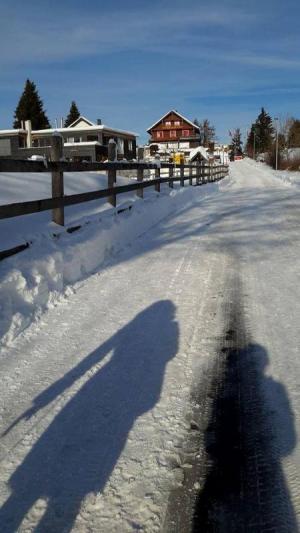Reflections on Practice Through Intervision and Arts Based Approaches
Reflections on Practice Through Intervision and Arts Based Approaches
 In early February, the Center for Security Studies at ETH Zurich, together with the Swiss Federal Department of Foreign Affairs, organized a retreat for practitioners working on conflicts with religious dimensions. It combined arts-based reflection and peer exchange. I attended the retreat, along with another member of the PhD cohort, Jerome Armstrong, and Dr. Susan Allen, who was one of the facilitators of the afternoon sessions.
In early February, the Center for Security Studies at ETH Zurich, together with the Swiss Federal Department of Foreign Affairs, organized a retreat for practitioners working on conflicts with religious dimensions. It combined arts-based reflection and peer exchange. I attended the retreat, along with another member of the PhD cohort, Jerome Armstrong, and Dr. Susan Allen, who was one of the facilitators of the afternoon sessions.
In linking arts-based approaches with Intervision, the goal was to create synergies that would stimulate practitioners' different ‘zones of learning’ (rational, cognitive, intuitive, experiential, emotional). The mornings were dedicated to an art-based approach, led by Margie Gillis, an internationally acclaimed solo modern dancer/choreographer.
The afternoons offered space for practitioners to reflect and discuss specific challenges they were facing within their work. The safe space allowed practitioners to learn from each other and to address specific cases and served as fertile ground for new ideas. I use the word ‘fertile’ because we were entering those afternoons inspired by our morning exploration and communication through dance.
As a field, I believe we are in need of finding new ways of approaching conflict. The social effects of conflict are also so complex that finding new mediums and languages that can address the effects and cut across cultures is a challenge. It is then both joyful and inspiring when you experience a new approach. Margie Gillis engaged us during the retreat in her art-based approach of "Dancing from the Inside Out." I will share a reflection written by Ms. Gillis that I believe speaks to how this approach could be useful in its applications to our work and for practitioners as we move in and through conflict. She reflects, “it is astonishing what can be accomplished through the smallest movement patterns. A layered and complex narrative can be generated from the most compact experience. The transmission of worldviews is not only derived from an intellectual stance but through subtle gestures. Even the slightest movements can increase or decrease levels of receptiveness in relationships. What slips through the cracks of communication can be recovered through somatic sensibilities.” A shared challenge that I have heard many times in the field from different practitioners is how to address ‘what slips through the cracks of communication.’ Ms. Gillis' approach brings the human body as a “teacher” and choreography itself as a form of “cognition.”
Every morning, she led 22 practitioners in dance movements/exercises that encouraged us to think not only about the body but also with the body. This approach enabled us to experience and understand a new level of body awareness. The creativity that we seek to encourage as we move through conflict is a product not only of the mind but also of the heart and the body. Practitioners hailed from different cultures and this also provided an additional enriching and learning space since each one of us was able to reflect on what the body means in our respective cultures and how it would feel and fit into our work. The openness we seek to cultivate in our practices usually refers to the mind. However, in the workshop the openness and fluidity in our body translated into the openness and fluidity in our minds. This asks of us as practitioners to revisit how such practices could benefit the field and the possible impact on shifts or transformations in conflict. In order to pursue this, we should begin with ourselves as practitioners. Integrating the body into theory and practice in our field requires that we first explore such practices, which are being informed by neuroscience.
It would be difficult in this short reflection to fully explore this methodology and its applications. However, as a practitioner I highly recommend taking some time to read The Choreography of Resolution. In this book, you will not only read about this methodology but also about other pedagogical frameworks. I do believe that we must invest more time in understanding the mind and body connection and how movement/dance is a resource for our work that involves transformational processes as well as a resource for self-care as practitioners. The retreat not only provided us with a new tool to consider for our practitioner’s toolbox but it was also re-energizing for the body, mind and soul.
### Photo: Einsiedeln by Laura Villanueva




